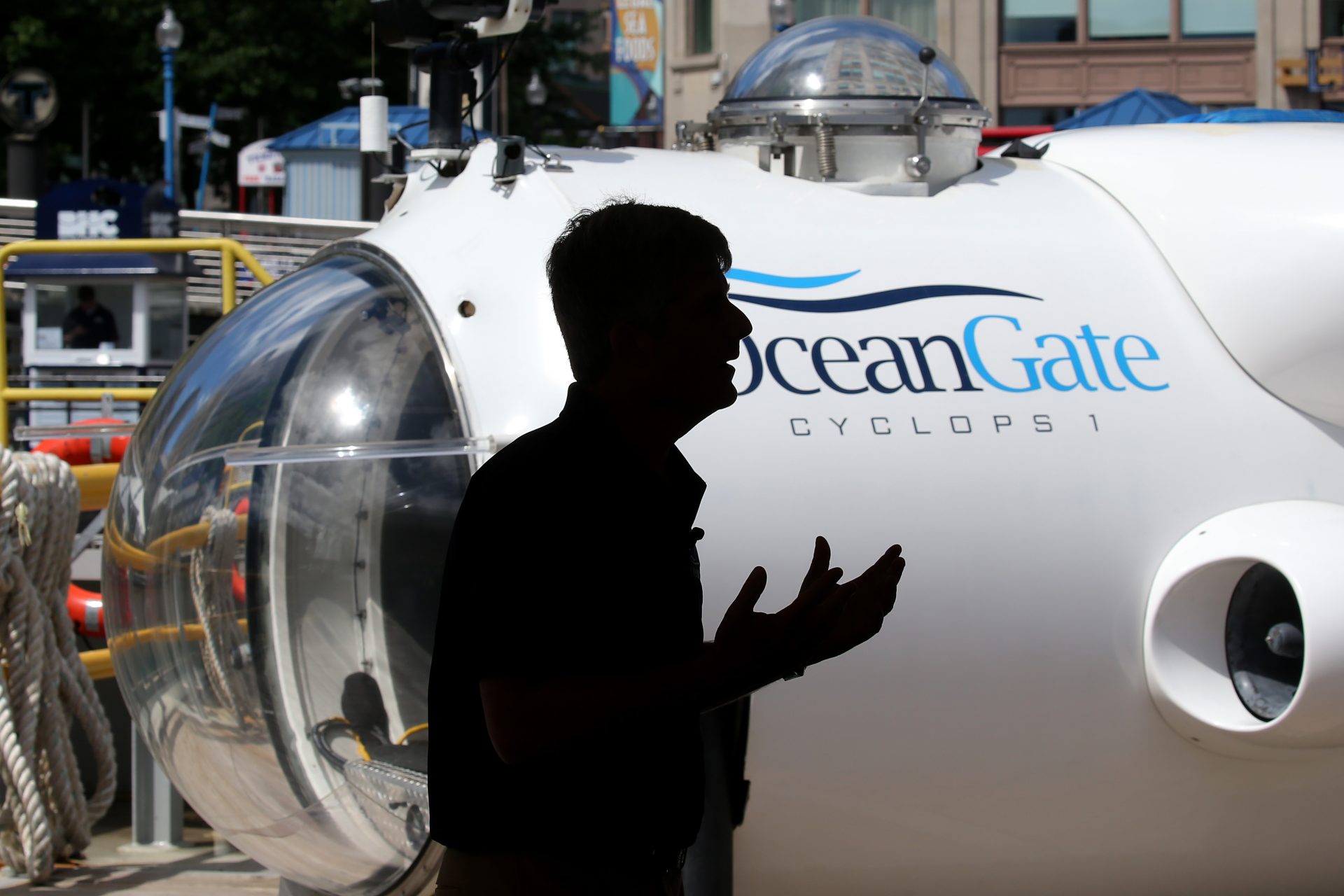From innovation to tragedy: The Titan submersible and 5 other deadly inventions
It has been one year since the world was hypnotized by the Titan submersible tragedy. Inventors such as the creator of the Titan are visionaries who have dreams of creating a better future, but sometimes, their plans end in disaster.
Such was the case for Stockton Rush, who, as a little boy, had a dream growing up to be the first man on Mars! However, after discovering that a medical problem with his eyes disqualified him from being in the military, he stopped looking up and started looking down towards the ocean.
Rush, critical of US legislation for stifling commercial submarine innovation with what he viewed as excessive safety measures, spearheaded the development of the submersible 'Titan'.
The 'Titan' was deployed in exploring the wreckage of the Titanic. Unfortunately, Stockton Rush's disregard for safety measures resulted in his own death and that of four passengers aboard the submersible.
However, Stockton Rush is hardly the first man to perish from his own invention. Click on to discover other inventors who died due to their own creations.
Photo Instagram @oceangate
Franz Reichelt was a French tailor and inventor who was born in 1878 in the Austro-Hungarian Empire. He’s mostly remembered for trying to develop a parachute suit that would allow aviators to land safely.
Early experiments with dummies were successful but Reichelt had a hard time making a wearable, practical suit. Experts tried to dissuade him, but Reichelt persevered, proving that perseverance isn’t always good. The next step? Tests from the Eiffel Tower.
In February 1912, the inventor received permission to carry out experiments from the Eiffel Tower. Local authorities had understood that Reichelt would test his parachute suit with dummies but on the cold morning of February 4, 1912, the inventor showed up wearing his parachute suit.
Image: British Pathé
“I want to try the experiment myself and without trickery, as I intend to prove the worth of my invention”, Rechelt declared moments before jumping from the first deck of the Eiffel Tower.
Image: British Pathé
Rechelt leaped into his demise, and his way into history books, 187 feet (about 57 meters) to the ground.
Image: British Pathé
Another fellow Austrian inventor was Max Valier, who was dreaming about the possibilities of space travel all the way back in the 1920s.
The highly-methodical Valier developed a four-stage plan to develop rocket-powered ground cars with an eye to develop them into flying cars and finally, a spacecraft. However, his dream never took off.
The Austrian aviator managed to make rocket cars that could reach impressive speeds of over 145 miles (233 km) per hour.
Nonetheless, Valier's plans came to an end in 1930 when an alcohol-fueled rocket exploded in his Berlin laboratory, killing him.
Valier was far from being the first astronaut, but a few of his proteges went on to become pioneers of rocketry and a few like Arthur Rudolph even managed to be part of NASA.
Francis Bacon is a rather fascinating figure from the Elizabethan era. He was a philosopher, statesman, scientist, author, and pioneer of what we now know as the scientific method. He was, very literally, a Renaissance man.
During a stay in Highgate, near London, Bacon came up with the idea of opening and stuffing a chicken with snow in order to preserve its flesh.
Bacon, believe it or not, didn’t die of salmonella. By all accounts, the experiment turned out rather well. Unfortunately, he caught pneumonia while freezing the chicken and died. Still, he remains to be considered one of the greatest minds England has ever produced.
Image: K. Mitch Hodge / Unsplash
Like Francis Bacon, Alexander Bogdanov was a bit of everything: A physician, science fiction writer, Bolshevik revolutionary, and philosopher. Here Bogdanov can be seen playing chess with his fellow Marxist and political rival, Vladimir Lenin.
Russia in the 1920s was a dangerous place full of political intrigue, increasing authoritarianism and economical woes that might be difficult to imagine today.
It was here where Bogdanov, instead of finding his demise in the gulags or during an endless purge, saved Stalin some work with the help of blood transfusions.
Bogdanov had developed a theory that blood transfusions could provide him eternal youth. The Soviet philosopher claimed that getting blood from younger people improved his eyesight, stopped his baldness, and made him 10 years younger.
However, his experiments were cut short in 1928, when a blood transfusion from a donor suffering from malaria and tuberculosis cost him his life. He probably should have stuck to playing chess with comrades instead!
Tennessee-born Horace Lawson Hunley was a marine engineer who wanted to serve his country. Unfortunately, his country at the time was the Confederate States of America, for which Hunley developed the first submarine capable of successfully sinking a warship.
Usually referred to as the CSS Hunley, the crank-propelled submarine started its career in July 1863. However, from then on things only got worse.
On August 29 of that year, the pioneering war submersible caused its first casualties: Five crew members drowned during a test run after the captain accidentally opened a hatch with his foot.
After the incident, the Confederate Army placed Hunley as part of the submarine crew for a trial attack expecting better results. On October 15, 1863, eight crewmen drowned, including its inventor.
Glory finally came for the CSS Hunley on February 17, 1864, the submarine's sole torpedo hit the hull of the USS Housatonic in Charleston Harbor. The sloop sank in five minutes, killing Union soldiers. Here you can see the coast of Charleston today.
Image: Nick Dominguez / Unsplash
This would be the CSS Hunley's first and final mission. The submersible went down a third and last time, drowning eight Confederate crew members. Over a century later, the remains of the submarine were rediscovered and finally taken to the surface in the year 2000.
The remains of the crew were laid to rest in 2004 in Charleston in an event attended by thousands. Once again, an embarrassing Confederate defeat is turned into a moral victory of sorts.
More for you
Top Stories












































